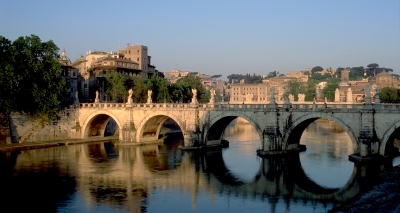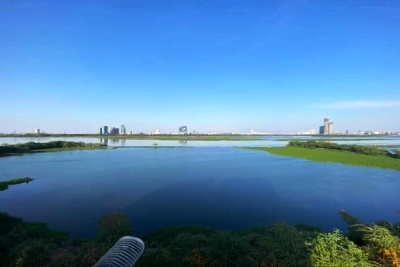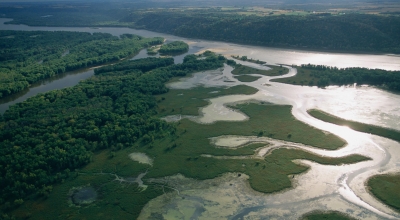On the banks of which river was the Roman of civilizations built?

According to legend, the city of Rome was founded in 753 BC on the banks of the Tiber about 25 kilometres (16 mi) from the sea at Ostia. Tiber Island, in the center of the river between Trastevere and the ancient city center, was the site of an important ancient ford and was later bridged.
The Tiber Latin: Tiberis; Italian: Tevere is the third-longest river in Italy, rising in the Apennine Mountains in Emilia-Romagna and flowing 406 kilometres (252 mi) through Tuscany, Umbria and Lazio, where it is joined by the river Aniene, to the Tyrrhenian Sea, between Ostia and Fiumicino. It drains a basin estimated at 17,375 square kilometres (6,709 sq mi). The river has achieved lasting fame as the main watercourse of the city of Rome, founded on its eastern banks.
Tiber has heavily advanced at the mouth by about 3 kilometres (2 miles) since Roman times, leaving the ancient port of Ostia Antica 6 kilometres (4 miles) inland. However, it does not form a proportional delta, owing to a strong north-flowing sea current close to the shore, to the steep shelving of the coast, and to slow tectonic subsidence.
Picture Credit : Google


